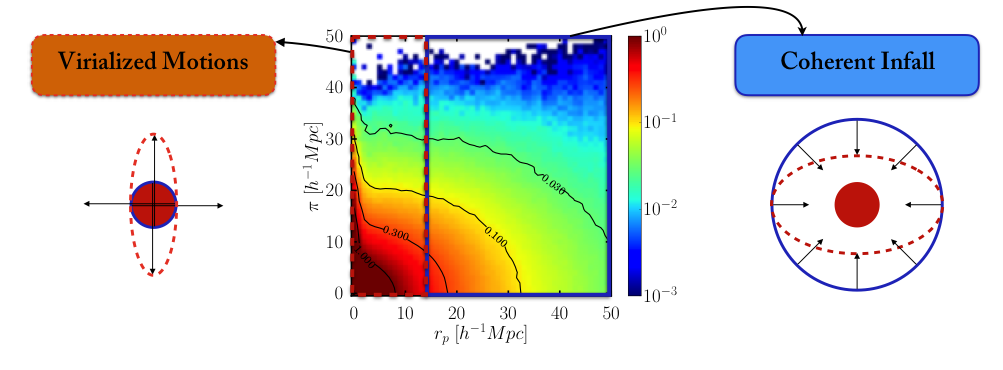Darklight PhD fellow Faizan Mohammad and co-authors investigate in this paper (MNRAS, Vol. 458, May 2016) the use of the cross-correlation between galaxies and galaxy groups to measure redshift-space distortions (RSD) and thus probe the growth rate of cosmological structure. This is compared to the classical approach based on using galaxy auto-correlation. They make use of realistic simulated galaxy catalogues that have been constructed by populating simulated dark matter haloes with galaxies through halo occupation prescriptions. They adapt the classical RSD dispersion model to the case of the group–galaxy cross-correlation function and estimate the RSD parameter by fitting both the full anisotropic correlation function
and its multipole moments. In addition, they define a modified version of the latter statistics by truncating the multipole moments to exclude strongly non-linear distortions at small transverse scales. They fit these three observable quantities in their set of simulated galaxy catalogues and estimate statistical and systematic errors on
for the case of galaxy–galaxy, group–group, and group–galaxy correlation functions. When ignoring off-diagonal elements of the covariance matrix in the fitting, the truncated multipole moments of the group–galaxy cross-correlation function provide the most accurate estimate, with systematic errors below 3 per cent when fitting transverse scales larger than 10 h−1 Mpc. Including the full data covariance enlarges statistical errors but keep unchanged the level of systematic error. Although statistical errors are generally larger for groups, the use of group–galaxy cross-correlation can potentially allow the reduction of systematics while using simple linear or dispersion models.
To read the full paper:
Faizan Gohar Mohammad, Sylvain de la Torre, Davide Bianchi, Luigi Guzzo and John Andrew Peacock – Group-galaxy correlations in redshift space as a probe of the growth of structure – MNRAS Volume 458, pp.1948-1963, 05/2016.

